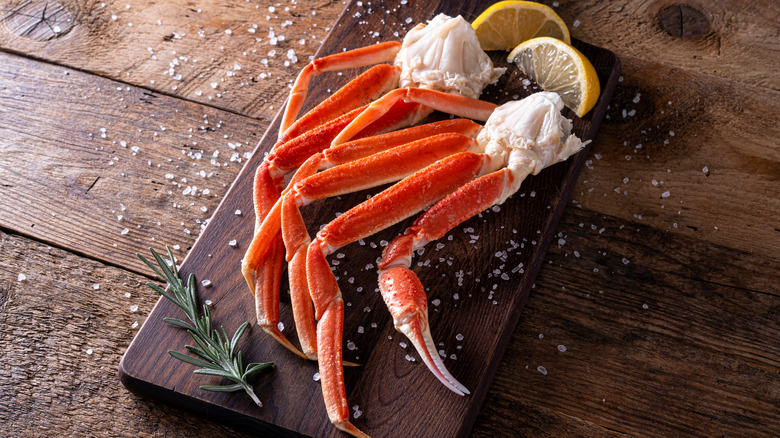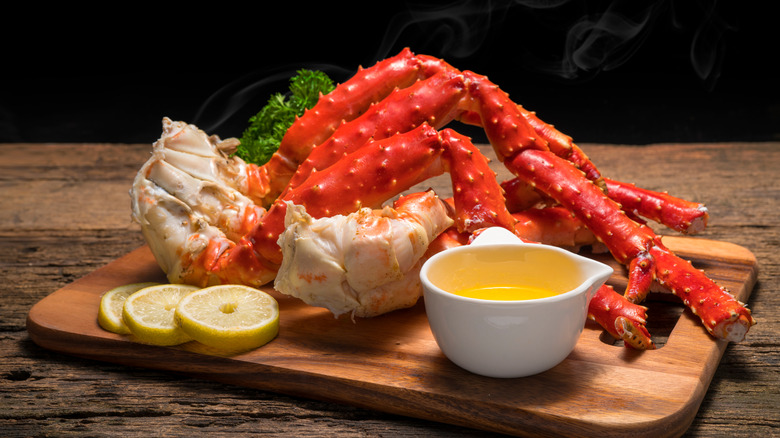Snow Crab Vs. King Crab: Is There A Nutritional Difference?
With at least 4,500 different species worldwide (via Angry Crab Shack), crabs are unique crustaceans that are tasty to some — so much so that Alaska canceled crab season for one of its most popular species. Two popular crab species are king crab and snow crab. According to the Alaska Department of Fish and Game, king crabs can live as long as 30 years and can be found in the cold waters between British Columbia and Japan. Snow crabs, also known as queen crabs, can be found in Arctic and subpolar waters, according to FishSource. But what about the nutritional difference between the two species?
Per the USDA, three ounces of raw snow crab has about 76.5 calories, 15.7 grams of protein, 1 gram of fat, 46.8 milligrams of cholesterol, and 458 milligrams of sodium. Similarly, three ounces of raw Alaskan king crab has 71.4 calories, 15.6 grams of protein, 0.51 grams of fat, 35.7 milligrams of cholesterol, and 711 milligrams of sodium, per the USDA. Neither snow crab nor king crab contain any fiber or carbohydrates. Here's a further comparison of the two crab species.
King crab contains nearly twice as much sodium as snow crab
Both snow crab and king crab have various vitamins and minerals, such as calcium, iron, zinc, selenium, folate, niacin, omega-3 fatty acids, and vitamins B12 and C, per WebMD. Vitamin B12 and folate are important for helping with anemia and other vitamin deficiencies. Omega-3 fatty acids may help support a healthy heart and brain, as well as minimize blood clots and the risk of Alzheimer's disease and dementia.
According to the USDA, three ounces of cooked snow crab has 97.8 calories, 20.1 grams of protein, 1.28 grams of fat, 60.4 milligrams of cholesterol, and 587 milligrams of sodium. On the other hand, three ounces of cooked king crab contains 82.4 calories, 16.5 grams of protein, 1.31 grams of fat, 45 milligrams of cholesterol, and 910 milligrams of sodium, per the USDA. The biggest notable difference between snow crab and king crab is their sodium levels. Whether raw or cooked, three ounces of king crab has about twice as much sodium as three ounces of snow crab. Per the American Heart Association, 1,500 milligrams is the ideal sodium amount an adult should consume in a day, and excessive amounts of sodium can cause several health issues, such as high blood pressure. One thing to keep in mind is that crab is also commonly served with melted or clarified butter, which can increase the calories, fat, and cholesterol for the dish.

